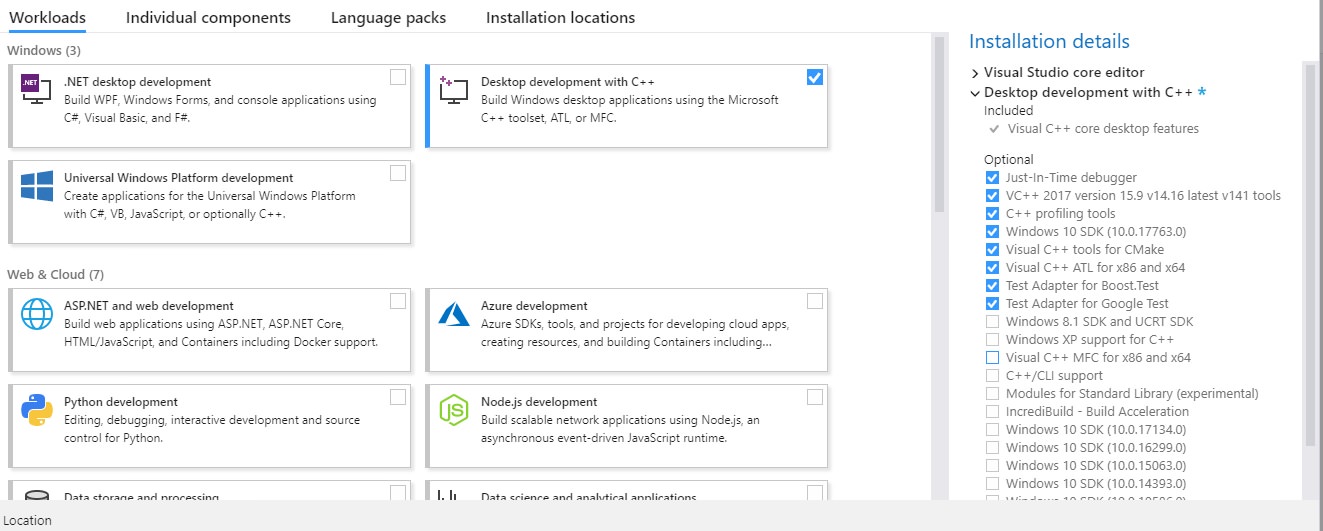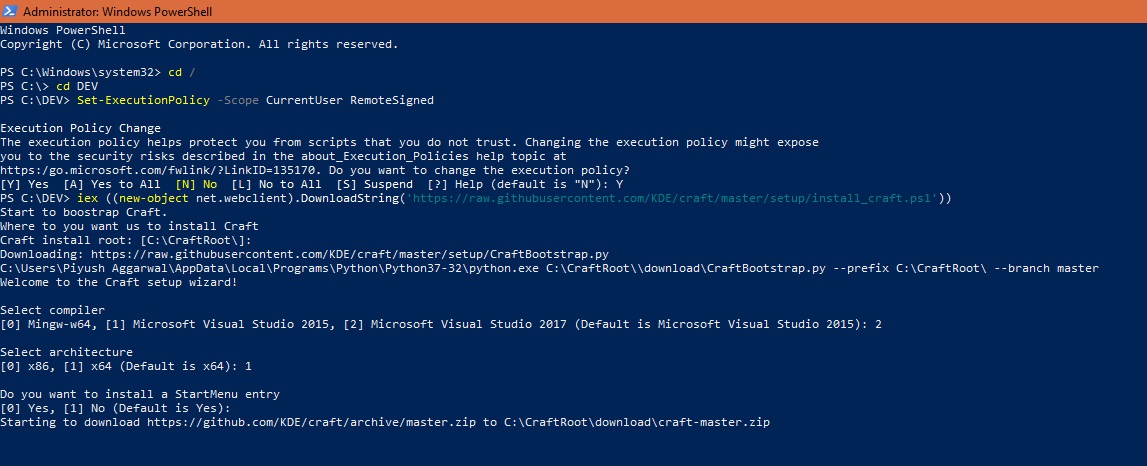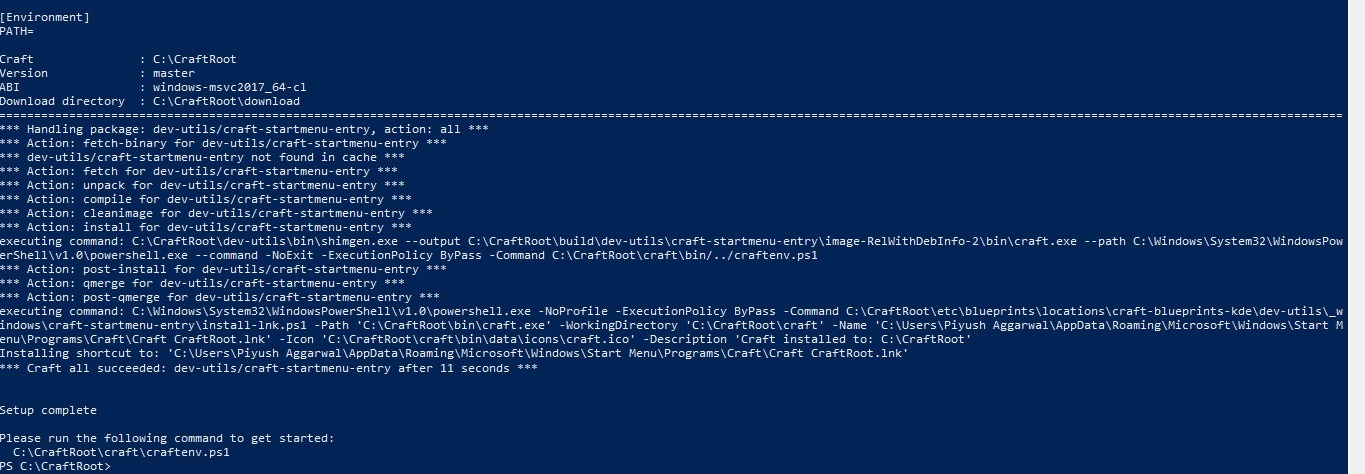KDEConnect/Build Windows
NOTE: This tutorial assumes Craft is being installed in C:/ [default]
0. SETTING UP ENVIRONMENT
The environment for KDE Connect on Windows simply consists of two parts- A compiler of choice and a build system. While we do have a couple of options for the compiler, our recommended build system is Craft. While this is an all-in-one build guide, you should definitely refer to Craft's documentation for further information on using the build system in your development environment!
MSVC (full-support) | MinGW-w64 (partial support)
0.1 Installing MSVC
1. Install Visual Studio 2019 (Community) from here and select Desktop development with C++.
2. Install these packages.
- Just-in-Time debugger
- VC++ 2019 version
- C++ profiling tools
- Windows 10 SDK
- Visual C++ tools for CMake
- Visual C++ ATL for x86 and x64
- Test Adapter for Boost.Test
- Test Adapter for Google Test
0.2 Installing MinGW-w64
1. Install MinGW-w64 through the GUI installer located here.
2. While installing Craft, feel free to select Mingw-w64 as your compiler!
Afterwards, there is no difference in the commands used in the development. Unfortunately, MinGW has limited support for OS specific features.
Note that due to the lacking of some definitions in MinGW provided header file, some plugins could not be compiled with all functions on Windows using MinGW.
This is still an experimental feature, and you might need some developer know-how to get past any build problems.
0.3 Installing Craft
1. Call the following commands in a Powershell window with Administrator Privileges
Set-ExecutionPolicy -Scope CurrentUser RemoteSigned
iex ((new-object net.webclient).DownloadString('https://raw.githubusercontent.com/KDE/craft/master/setup/install_craft.
2. During command 2, select the default (Visual Studio 17 if you chose MSVC earlier, otherwise Mingw-w64) as your compiler.
Select compiler [0] Mingw-w64, [1] Microsoft Visual Studio 2017, [2] Microsoft Visual Studio 2019 (default is Microsoft Visual Studio 2015): 1 Select architecture [0] x86 [1] x64 (Default is x64): 1
3. When installation is done, note the Environment variables to match the ones in top of this image:-
[Environment] PATH= Craft : C:\CraftRoot Version : master ABI : windows-msvc2017_64-c1 Download directory : C:\CraftRoot\download
1. BUILDING KDE CONNECT OUT OF LATEST SOURCE CODE
Craft has automated most of the redundant parts of the build process and exposed just the really useful parameters like which version to build, where to install et al.
1. Open Craft CraftRoot from search (in taskbar)
2. Run the following commands now.
REM set the version of kdeconnect-kde to be installed to the master branch craft --set version=master kdeconnect-kde REM install kdeconnect-kde within CraftRoot craft -i kdeconnect-kde
X. BUILDING A SHARE-ABLE INSTALLER
1. To create an installable setup, you need NSIS- a open source system to create Windows installers. Install it by this command: craft nsis
2. Now you can use the --package flag to build an installable .EXE out of latest source code available here. The command should look like this: craft --package extragear/kdeconnect-kde
Note the output file here:
Output: "C:\CraftRoot\tmp\kdeconnect-kde-master-86e5cd48-windows-msvc2017_64-cl.exe"
Great thanks to <TheOneRing_m> (Hannah) on IRC Freenode! She is the maintainer of KDE Craft, and a magician! 😄
Be sure to tell us if you got stuck somewhere in the process of setting up the developer environment. You can mail us. Yes we read the mails! 😜




